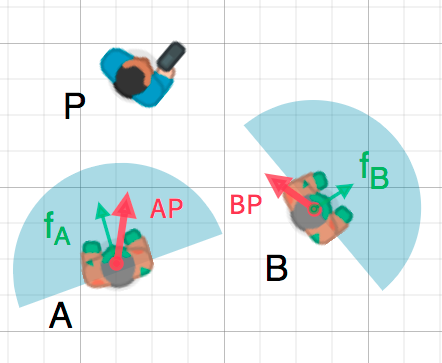
Write a program that reads a single line containing an integer which may be arbitrarily large, and writes the integer with embedded commas.
Input:
28470562348756298345
Output:
28,470,562,348,756,298,345
What value do you think each of these programs will print?
a)
int i = 300; WriteLine((byte) i);
b)
int j = 200; WriteLine((sbyte) j);
c)
int k = 1050; WriteLine((int) (byte) k);
d)
long l = 256_256_256_256; WriteLine((long) (byte) (short) (int) l);
We learned in the lecture that a double is a 64-bit floating point number with a 1-bit sign S, an 11-bit signed exponent E and a 52-bit mantissa M. The mantissa is a number between 1 and 2, represented in binary. The value of the floating-point number is basically
S · M · 2E
What values do you think these programs will print, at least approximately?
a)
int i = 1;
for (double d = 1.0; d > 0 ; d /= 2)
i += 1;
WriteLine(i);
b)
int i = 1;
for (double d = 0.5; d > 0 ; d = d * d)
i += 1;
WriteLine(i);Write a program that reads an N x N matrix of integers and prints it out rotated 90 degrees to the right.
Input:
2 4 6 8 8 6 4 2 1 3 7 9 9 7 3 1
Output:
9 1 8 2 7 3 6 4 3 7 4 6 1 9 2 8
Some zombies are chasing a player. Here is a top-down view:

Image credit: © Copyright 2014-2020, Juan Linietsky, Ariel Manzur and the Godot community (CC-BY 3.0)
Each zombie can see infinitely far in a 180° field of view as indicated by the light blue half-circular shapes above. In the picture above, zombie A can see the player, but zombie B cannot.
Write a program that reads, on three lines:
the X-Y position of the player
the X-Y position of a zombie
the direction vector f indicating the direction the zombie is facing (like fA and fB above)
Each position or vector is a pair of floating-point numbers. The program should print "can see" if the zombie can see the player, otherwise "cannot see".
Write a program that reads an integer n, and computes and prints the integer square root of n, i.e. the non-negative integer i such that i2 = n. If no such integer exists, print "not a square". Do not call any library functions. Your method must run in time O(log N) in the worst case.
The game of 3-D Tic-Tac-Toe is played on a 4x4x4 cube of cells. As in ordinary Tic-Tac-Toe, players take turn placing marks X or O. The winner is the first player to form four in a row in any direction:

Write a program that alllows two players to play 3-D Tic-Tac-Toe. After each move, the program should print out the board in a format such as this:
...X .... .O.. X..O .... .... .O.O ..OX ...X ..OX .O.O OO.X XX.X XXO. .OO. O..X
Each player should enter their move as three digits (each from 0-3) representing a level, row, and column number. For example, '303' would represent the upper-right square in the lowest level.